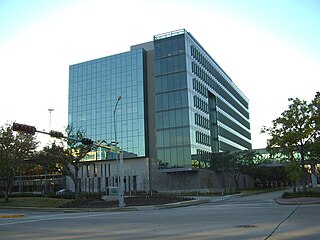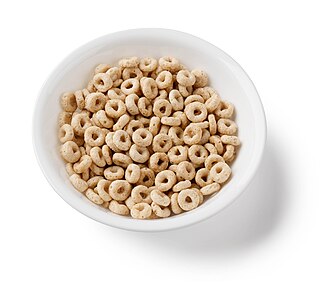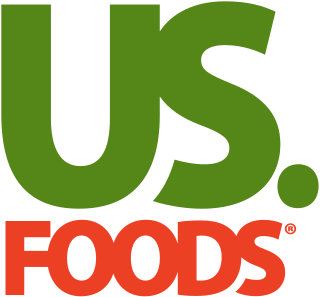
Beijing cuisine, also known as Jing cuisine, Mandarin cuisine and Peking cuisine and formerly as Beiping cuisine, is the local cuisine of Beijing, the national capital of China.

A restaurant is a business that prepares and serves food and drinks to customers. Meals are generally served and eaten on the premises, but many restaurants also offer take-out and food delivery services. Restaurants vary greatly in appearance and offerings, including a wide variety of cuisines and service models ranging from inexpensive fast-food restaurants and cafeterias to mid-priced family restaurants, to high-priced luxury establishments.

A fast-food restaurant, also known as a quick-service restaurant (QSR) within the industry, is a specific type of restaurant that serves fast-food cuisine and has minimal table service. The food served in fast-food restaurants is typically part of a "meat-sweet diet", offered from a limited menu, cooked in bulk in advance and kept hot, finished and packaged to order, and usually available for take away, though seating may be provided. Fast-food restaurants are typically part of a restaurant chain or franchise operation that provides standardized ingredients and/or partially prepared foods and supplies to each restaurant through controlled supply channels. The term "fast food" was recognized in a dictionary by Merriam–Webster in 1951.

Fast food is a type of mass-produced food designed for commercial resale, with a strong priority placed on speed of service. It is a commercial term, limited to food sold in a restaurant or store with frozen, preheated or precooked ingredients and served in packaging for take-out/takeaway. Fast food was created as a commercial strategy to accommodate large numbers of busy commuters, travelers and wage workers. In 2018, the fast food industry was worth an estimated $570 billion globally.

A cafeteria, sometimes called a canteen outside the U.S. and Canada, is a type of food service location in which there is little or no waiting staff table service, whether in a restaurant or within an institution such as a large office building or school; a school dining location is also referred to as a dining hall or lunchroom. Cafeterias are different from coffeehouses, although the English term came from the Spanish term cafetería, which carries the same meaning.

A buffet can be either a sideboard or a system of serving meals in which food is placed in a public area where the diners serve themselves. A form of service à la française, buffets are offered at various places including hotels, restaurants, and many social events. Buffet restaurants normally offer all-you-can-eat food for a set price, but some measure prices by weight or by number of dishes. Buffets usually have some or mostly hot dishes, so the term cold buffet has been developed to describe formats lacking hot food. Hot or cold buffets usually involve dishware and utensils, but a finger buffet is an array of foods that are designed to be small and easily consumed only by hand, such as cupcakes, slices of pizza, foods on cocktail sticks, etc.

Sysco Corporation is an American multinational corporation involved in marketing and distributing food products, smallwares, kitchen equipment and tabletop items to restaurants, healthcare and educational facilities, hospitality businesses like hotels and inns, and wholesale to other companies that provide foodservice. The company is headquartered in the Energy Corridor district of Houston, Texas. Sysco is the world's largest broadline food distributor; it has more than 600,000 clients in a wide array of fields. Management consulting is also an integral part of their services. The company operates approximately 330 distribution facilities worldwide; providing service to over 90 countries.
A food service distributor is a company that provides food and non-food products to restaurants, cafeterias, industrial caterers, hospitals, schools/colleges/universities, nursing homes, and anywhere food is served away from the home.

A serving size or portion size is the amount of a food or drink that is generally served.

Kosher style refers to foods commonly associated with Jewish cuisine but which may or may not actually be kosher. It is a stylistic designation rather than one based on the laws of kashrut. In some U.S. states, the use of this term in advertising is illegal as a misleading term under consumer protection laws.

Food safety is used as a scientific method/discipline describing handling, preparation, and storage of food in ways that prevent foodborne illness. The occurrence of two or more cases of a similar illness resulting from the ingestion of a common food is known as a food-borne disease outbreak. This includes a number of routines that should be followed to avoid potential health hazards. In this way, food safety often overlaps with food defense to prevent harm to consumers. The tracks within this line of thought are safety between industry and the market and then between the market and the consumer. In considering industry-to-market practices, food safety considerations include the origins of food including the practices relating to food labeling, food hygiene, food additives and pesticide residues, as well as policies on biotechnology and food and guidelines for the management of governmental import and export inspection and certification systems for foods. In considering market-to-consumer practices, the usual thought is that food ought to be safe in the market and the concern is safe delivery and preparation of the food for the consumer. Food safety, nutrition and food security are closely related. Unhealthy food creates a cycle of disease and malnutrition that affects infants and adults as well.
Restaurants fall into several industry classifications, based upon menu style, preparation methods and pricing, as well as the means by which the food is served to the customer. This article mainly describes the situation in the US, while categorisation differs widely around the world.

Restaurant media is an emerging form of retail media advertising used in cafeterias, fast food and family restaurants and diners and that reaches consumers while they dine.

Online food ordering is the process of ordering food, for delivery or pickup, from a website or other application. The product can be either ready-to-eat food or food that has not been specially prepared for direct consumption.

Brakes is a food and distribution company supplying food, drink and other products mainly to the catering industry in the UK through more than 20 distribution centres. It provides delivered wholesale and contract logistical services. The company was created in 1958 and headquartered in Ashford, United Kingdom. Brake Bros Limited has been a subsidiary of Sysco Corporation since 5 July 2016 when the latter bought it for $3.1bn.

Disposable food packaging comprises disposable products often found in fast-food restaurants, take-out restaurants and catering establishments. Typical products are foam food containers, plates, bowls, cups, utensils, doilies and tray papers. These products can be made from a number of materials including plastics, paper, bioresins, wood and bamboo.

Criticism of fast food includes claims of negative health effects, animal cruelty, cases of worker exploitation, children-targeted marketing and claims of cultural degradation via shifts in people's eating patterns away from traditional foods. Fast food chains have come under fire from consumer groups, such as the Center for Science in the Public Interest, a longtime fast food critic over issues such as caloric content, trans fats and portion sizes. Social scientists have highlighted how the prominence of fast food narratives in popular urban legends suggests that modern consumers have an ambivalent relationship with fast food, particularly in relation to children.

Social class differences in food consumption refers to how the quantity and quality of food varies according to a person's social status or position in the social hierarchy. Various disciplines, including social, psychological, nutritional, and public health sciences, have examined this topic. Social class can be examined according to defining factors — education, income, or occupational status — or subjective components, like perceived rank in society.

US Foods Holding Corp. is an American food service distributor founded in 1989. With approximately $24 billion in annual revenue, US Foods was the 10th largest private company in the US until its IPO. Many of the entities that make up US Foods were founded in the 19th century, including one that sold provisions to travelers heading west during the 1850s gold rush. US Foods offers more than 350,000 national brand products and its own "exclusive brand" items, ranging from fresh meats and produce to prepackaged and frozen foods. The company employs approximately 25,200 people in more than 60 locations nationwide, and provides food and related products to more than 250,000 customers, including independent and multi-unit restaurants, healthcare and hospitality entities, government and educational institutions. The company is headquartered in Rosemont, Illinois, and is a publicly traded company trading under the ticker symbol USFD on the New York Stock Exchange.

Food delivery is a courier service in which a restaurant, store, or independent food-delivery company delivers food to a customer. An order is typically made either by telephone, through the supplier's website or mobile app, or through a third party food ordering service. The delivered items can include entrees, sides, drinks, desserts, or grocery items and are typically delivered in boxes or bags. The delivery person will normally drive a car, but in bigger cities where homes and restaurants are closer together, they may use bikes or motorized scooters.

















